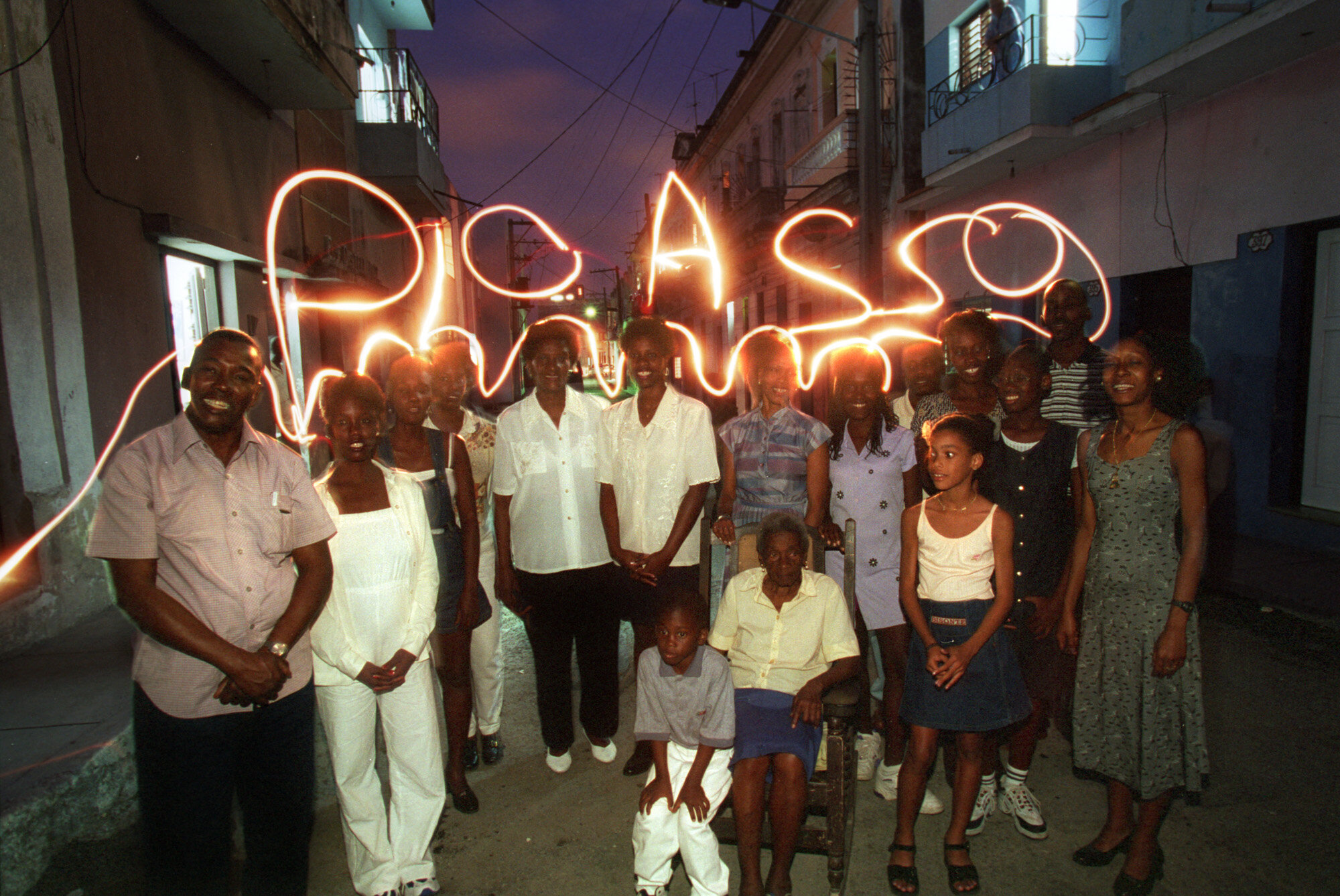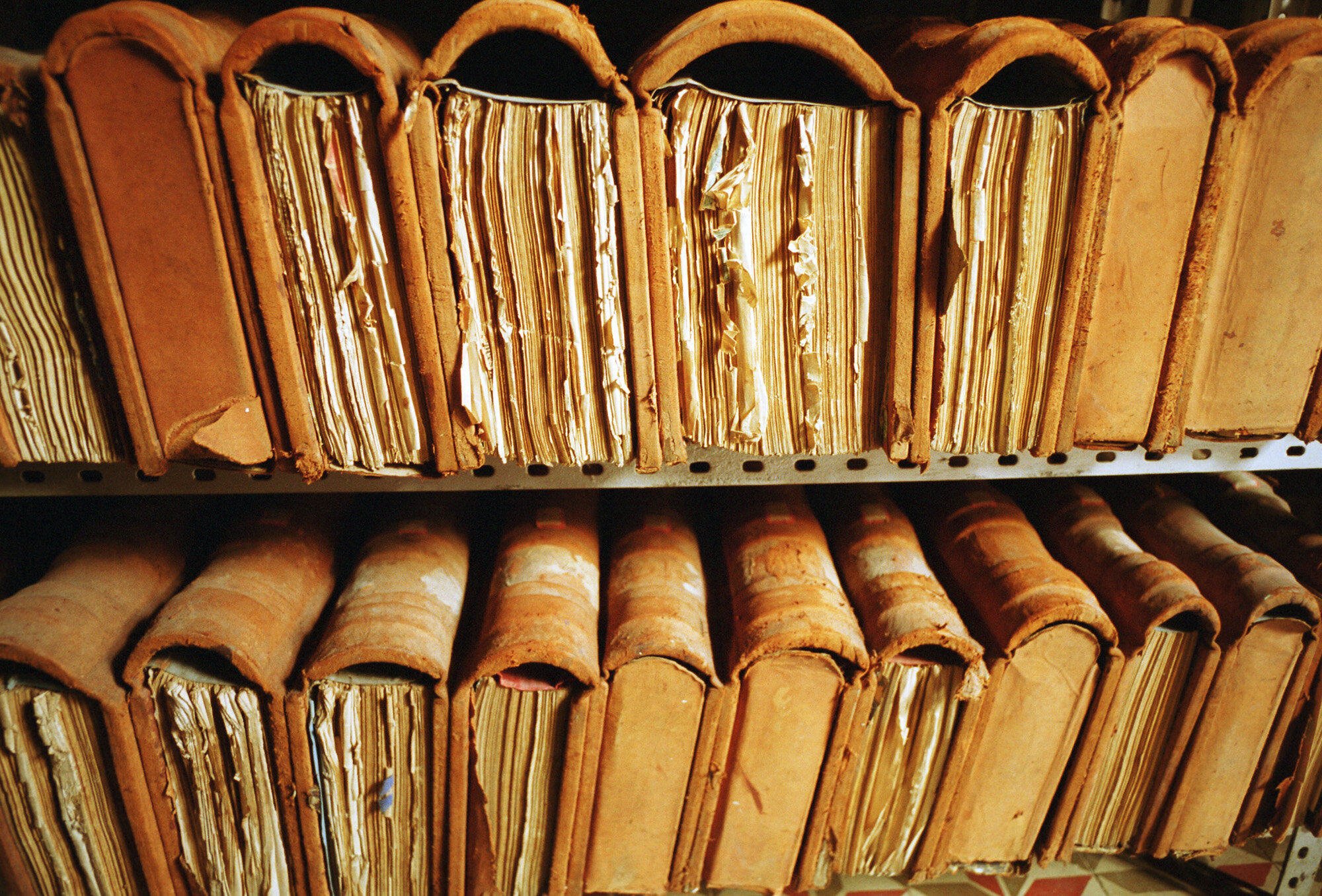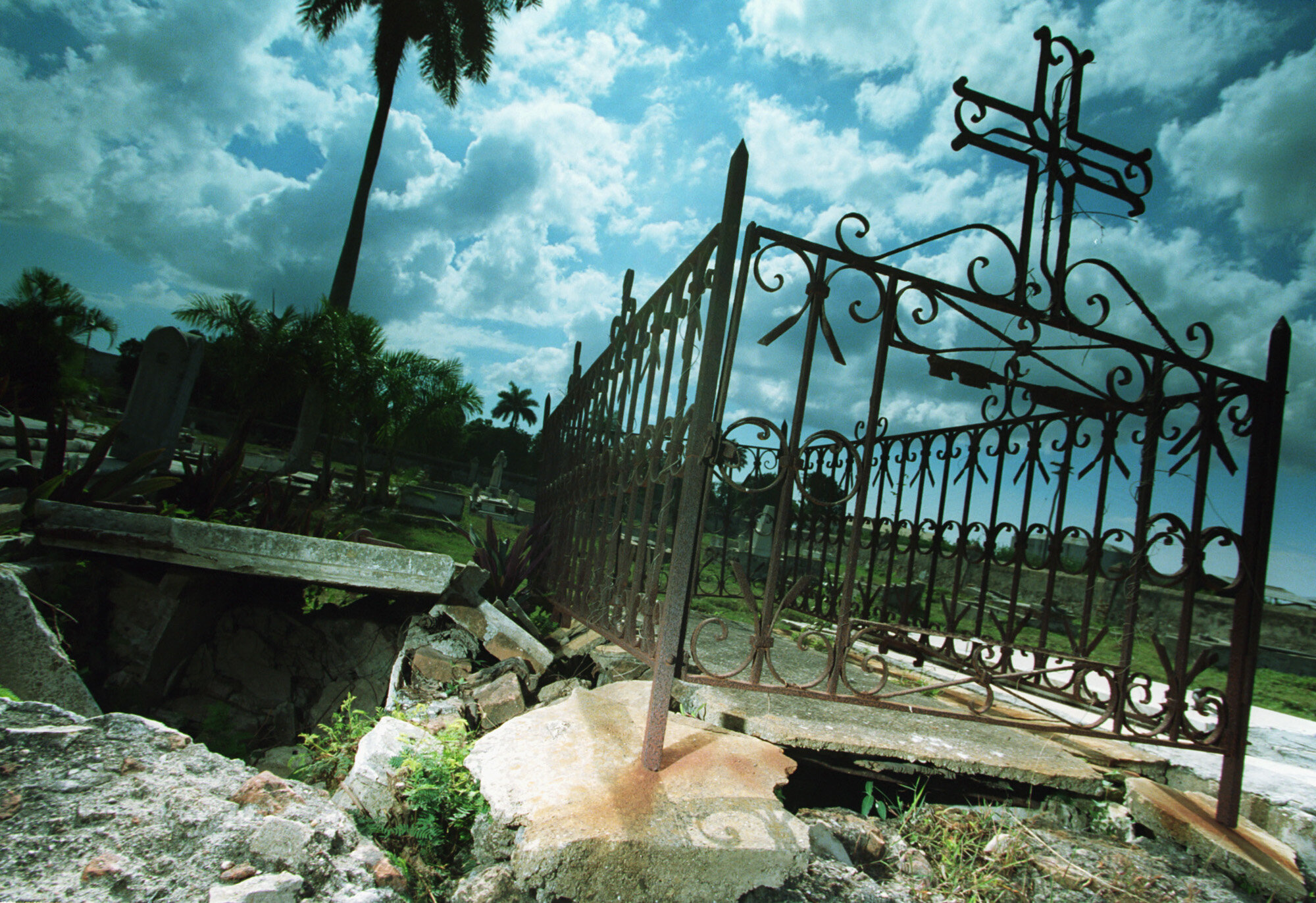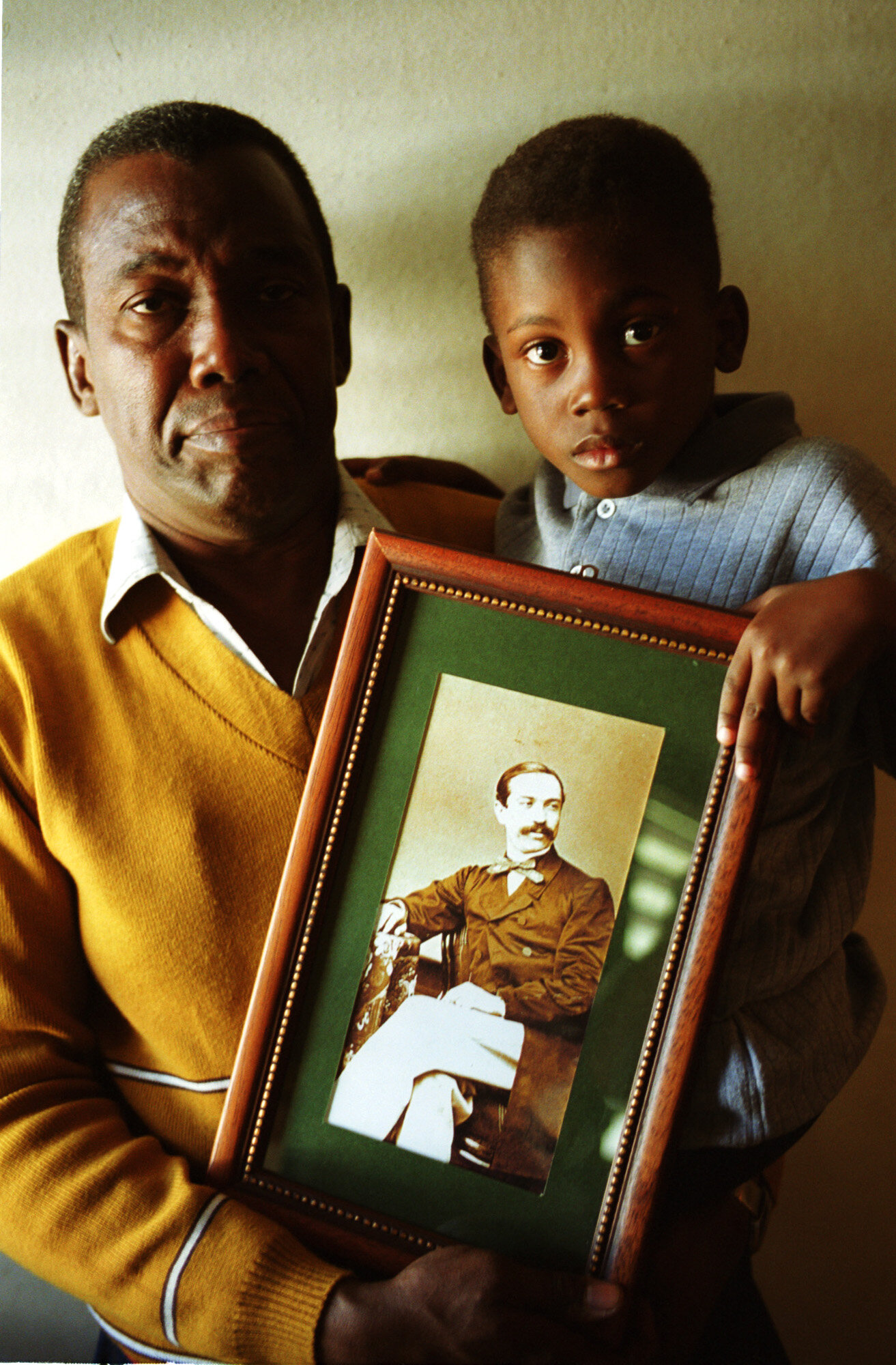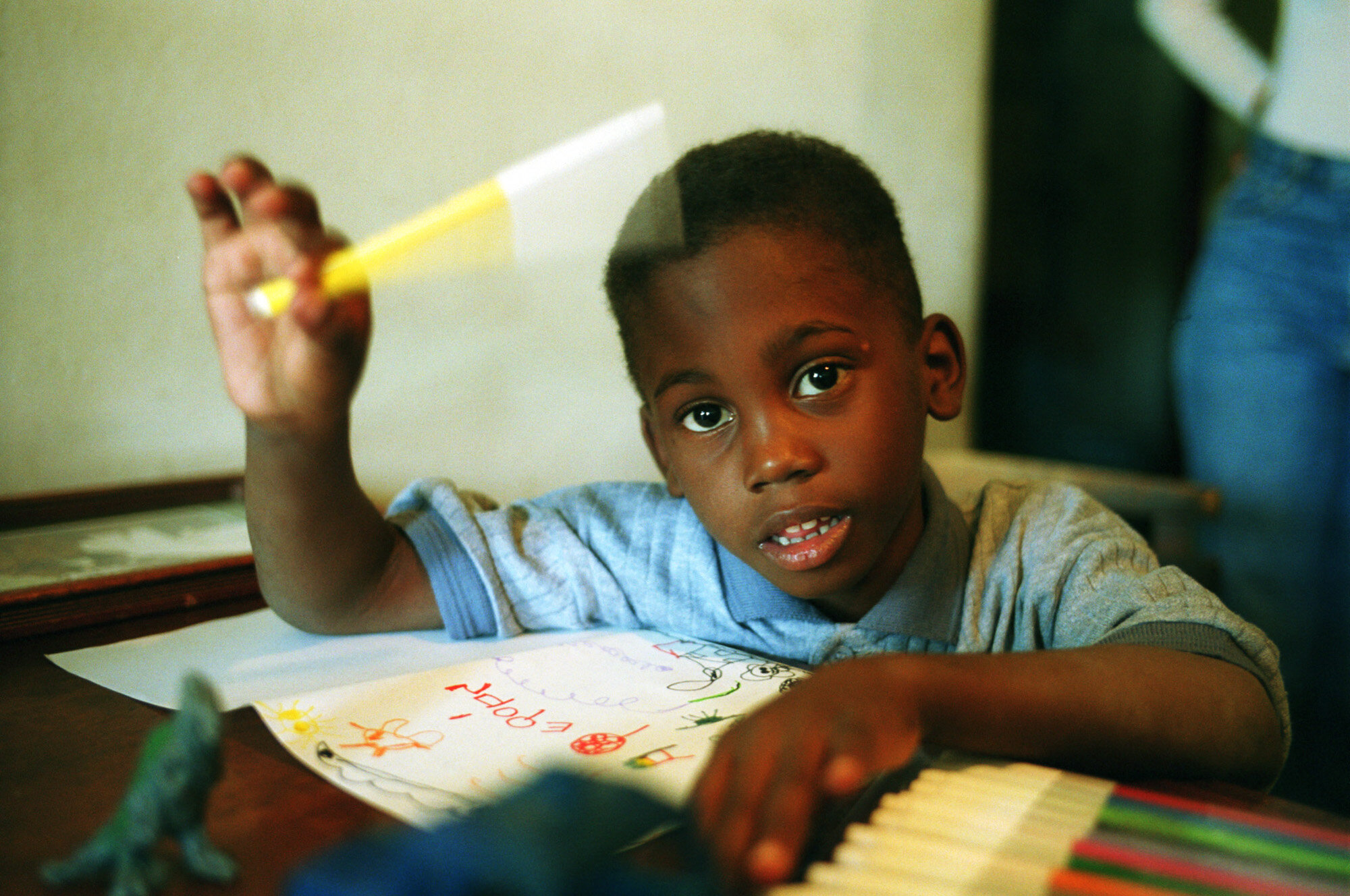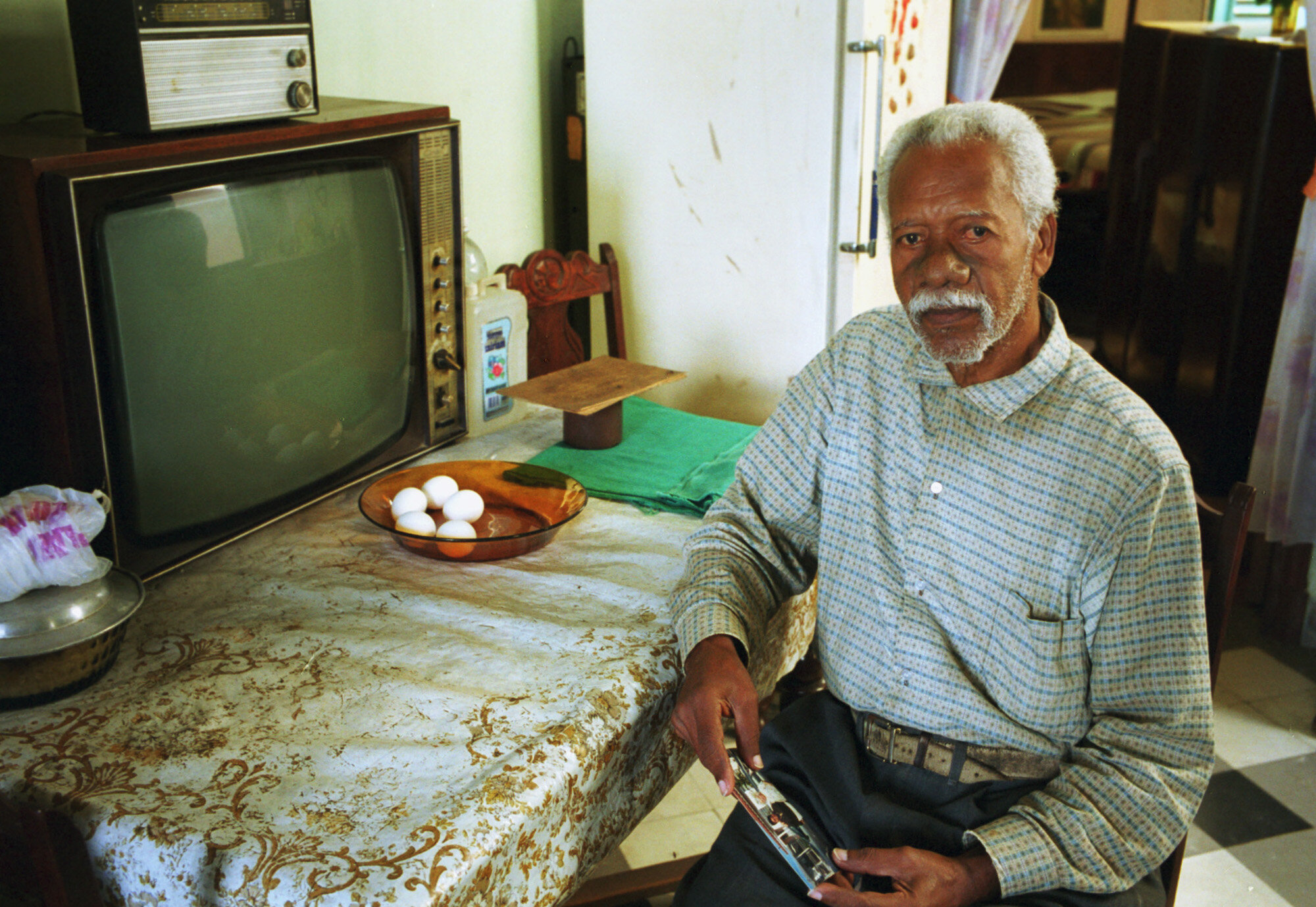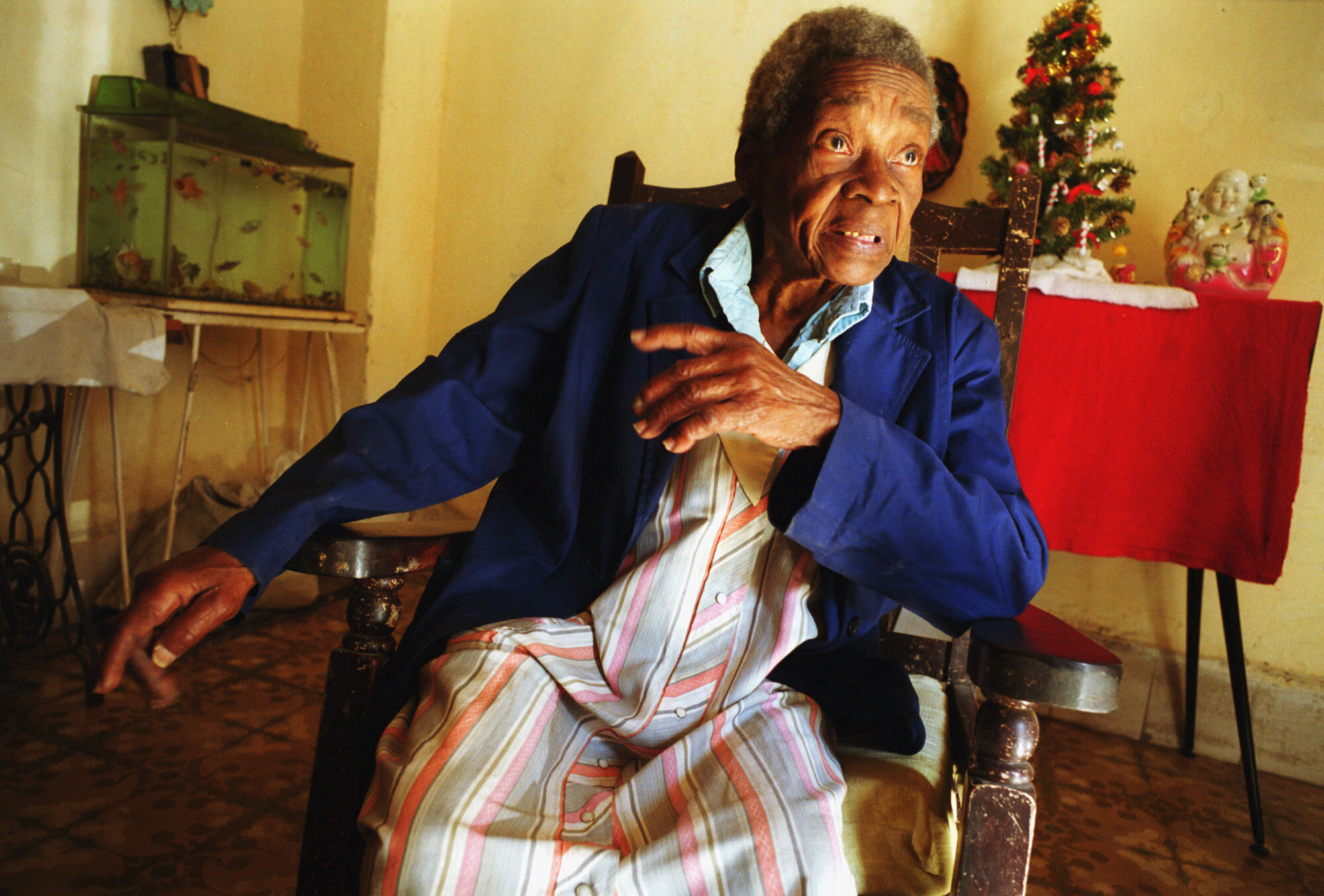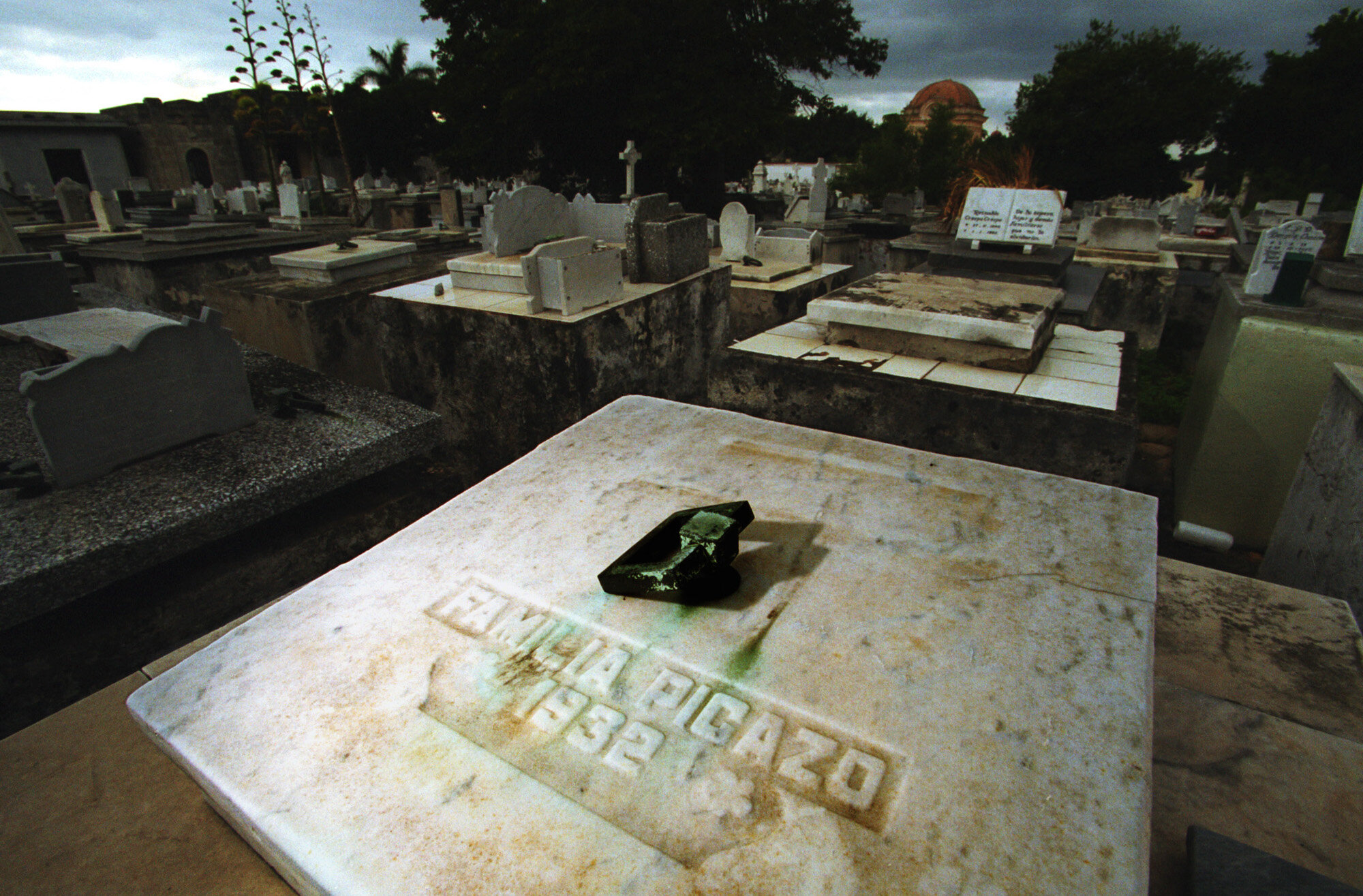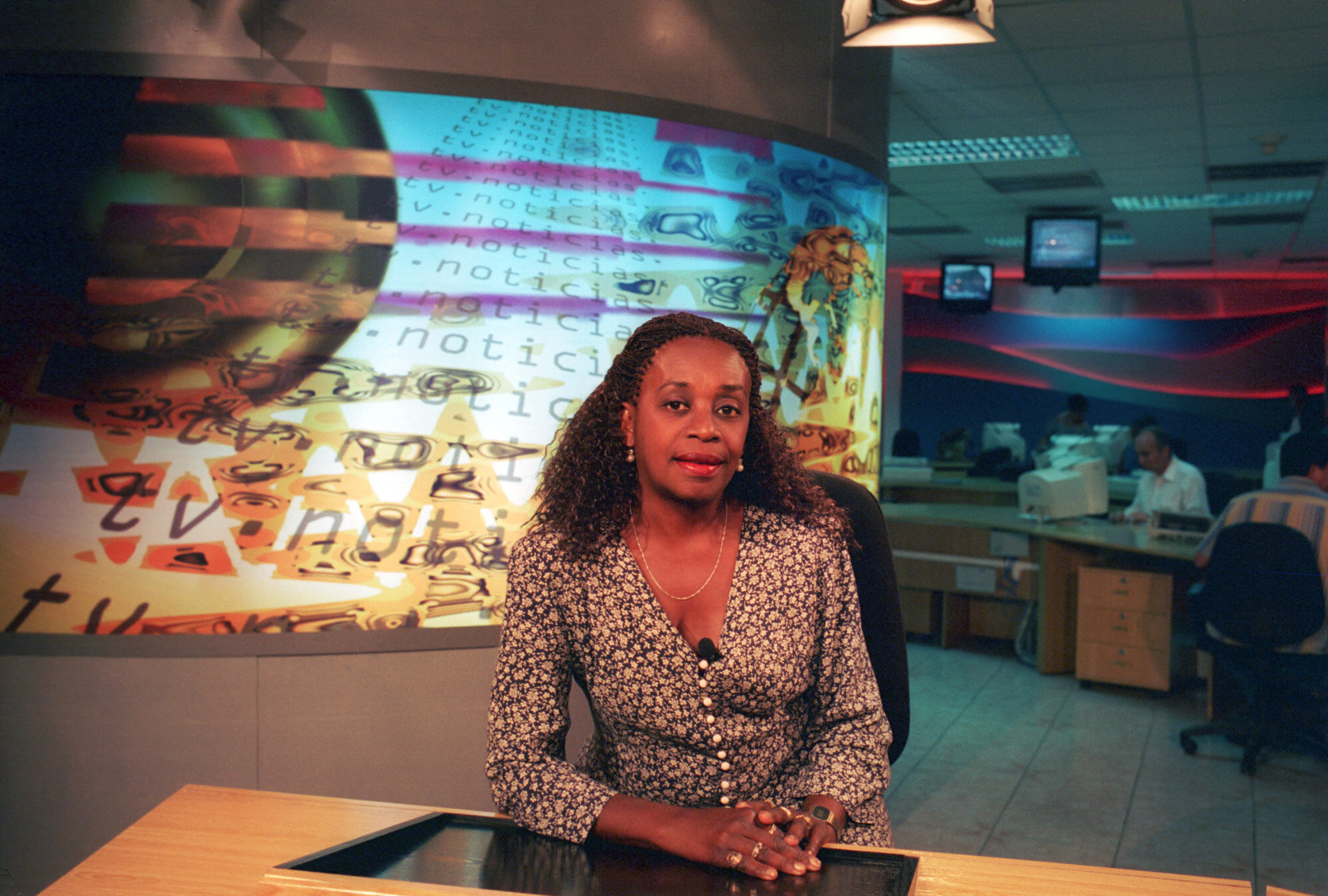In 2001 I was assigned by swiss magazine Cigar to photograph a story based on a documentary that Cuban TV had aired last year. Towards the end of the screening the voice of its maker, Cuban journalist Julia Mirabal, was heard saying: “To all the incredible stories that there are in Cuba, now add this one about the black Picassos in Cuba”.
The historical background of that story is about a Spaniard, who arrived in Cuba in 1868. Like many of his fellow compatriots back then, he had left his country in the quest for his personal El Dorado. He settled in the province of Cienfuegos, a booming region for its sugarcane fields. He seemed to have been well established in the society of white business men, but still, he breaks with the so called ‘Codigo Negro’, the black code, and marries a black woman, Cristina Serra; together they have 4 children.
But the Spaniard who is married to Cristina, a former slave, does already have a family. When he left his hometown Malaga at the age of 43, not only did he leave behind a country in turmoil and poverty, but also his first wife Ines Lopez and their six children.
Over 130 years later, in nowadays Cuba, Ramon is walking among the graves of the Reina cemetery in Cienfuegos, looking for the tomb of his great grandfather. Ramon is a radiologist from Havana but ever since he learned that he is a direct descendant of that Spaniard, he seems not to rest until unearthing all evidence he can find. His great grandfather was Don Francisco Picasso y Guardeño. One of Don Francisco’s children he had left behind in Spain was Maria. And years later, on the 15th of October 1881, Maria would give birth to Pablo Picasso, which makes Ramon Picasso, the radiologist from Havana, a direct member of the family of one of the most famous painters that the world has ever seen.
But there is not only Ramon, dozens of black Picassos are still living in Cuba. Back in 2001, I managed to bring together for a photo shoot all the 16 Picasso members that were living in Havana.
In an homage to Picasso, I chose to use light painting as the technique for that portrait, because it was an art form that Pablo Picasso himself had exploited. To do that, I had the camera on a tripod and fired a flash, leaving the camera open for some 30 seconds, in which I, after triggering the camera, rushed behind the group and painted, with a flashlight, the word: Picasso.
